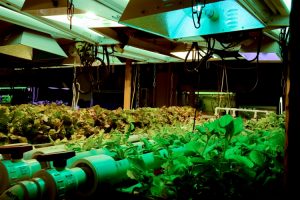
Story and Photography by Melissa Cheri
A high-tech agricultural lab. Produce grown without soil. High school students in white lab coats running experiments—four floors above the metal detectors that greet them each morning. All in the middle of New York City’s Hell’s Kitchen neighborhood.
One thing’s for sure: this isn’t your parent’s 4-H.
The 4-H club program started in rural America, through the United States Department of Agriculture, at the turn of the 20th century.
It was originally conceived as a way to bring public education to country life while introducing new agricultural farming methods.
The underlying concept was that positively engaging the under-served youth of America’s rural areas could have long-term impact on improving lives in these areas.
“When 4-H started in the early 1900s, we were pretty much a rural country, with pockets of urban centers. As the communities grew and transitioned and changed, so has 4-H,” said Lisa Lauxman, Director, Division Youth & 4-H, Institute for Youth, Family and Community, U.S. Department of Agriculture.
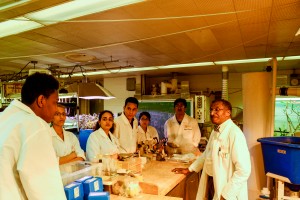 Over a hundred years after 4-H got its start in rural America, the organization continues to expand upon its mission to change lives by positively engaging under-served youth.
Over a hundred years after 4-H got its start in rural America, the organization continues to expand upon its mission to change lives by positively engaging under-served youth.
Although federally-funded, all 4-H programs are administered on a state-level through each state’s designated land-grant university. In New York State, Cornell University is the land grant institution that administers 4-H, chiefly through the Cornell Cooperative Extension.
CUCE-NYC’s Hydroponics, Aquaponics and Aquaculture Labs, founded in 2005, at New York City’s Food and Finance High School, located in Hell’s Kitchen, is just one example of how 4-H continues to expand in its quest to provide America’s youth with positive development experience.
At this lab, students work with Philson A. A. Warner, a Cornell applied scientist and learn how to apply new technology to solve problems, such as sustainable farming.
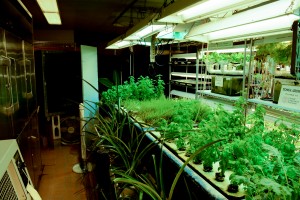 These students, and 4-Hrs, aren’t sitting around listening to Warner lecture. They are there to get their hands dirty and learn.
These students, and 4-Hrs, aren’t sitting around listening to Warner lecture. They are there to get their hands dirty and learn.
After donning their lab coats, a select group of six students gather around a medium-sized table to receive their assignments for the afternoon.
Some are tasked to collect water samples, while others run analyses on water quality. When they step into the lab, they are transformed from high school students into young professionals.
“The best part of working in the lab was the science behind the plants and how they grow,” said Kheeda Cruickshank, 23, a former Food & Finance High School student, 4-H member and Lab participant said, via email.
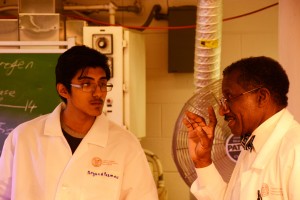 Warner expects that his students will go on to college and aim high in that expectation.
Warner expects that his students will go on to college and aim high in that expectation.
Warner said that in the early days of the program, many students did not apply to Cornell University, because they could not see themselves attending Cornell. However, over the past few college application cycles, he has noted an increase in students applying to the Ivy League university.
The Hydroponics Lab is more than just a lab.
It was a part of a curriculum, developed in part by Warner that provides experiential activities to teach both science and its application to the real world. Within this program, as known as the Grow with the Flow curriculum, students learn how to design and build a hydroponics system; how to harvest and sell produce to New York City markets.
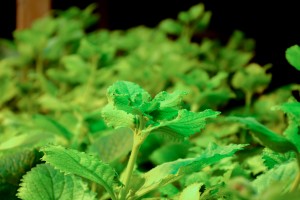 The best part about the program, however, may be that much of the produce grown there is also used in the school.
The best part about the program, however, may be that much of the produce grown there is also used in the school.
“Those basil, and lettuce that we planted was cooked in the kitchen and incorporated into our recipes during our culinary classes,” Cruickshank said, via email.
The Extension’s program may be high-tech, yet it remains true to a 4-H’s core: youth.
“The focus has always been about youth.” Lauxman said. “More than anything, youth want a sense of belonging. They want to feel like they can be engaged and make a difference.”
Indeed, it is this focus—what many inside 4-H call “positive youth development” that drives 4-H’s adaptability in urban communities.
Brandon Mathurin, 16, a Midwood High School junior and founder of can attest to its focus. Mathurin started with 4-H in elementary school.
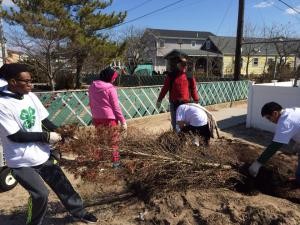 “A goal of 4-H back then was to basically engage the children in learning about healthy living, geospatial sciences, whatever the topic was,” Mathurin said.
“A goal of 4-H back then was to basically engage the children in learning about healthy living, geospatial sciences, whatever the topic was,” Mathurin said.
Although urban communities are distinctly different from rural ones, youth can still derive the same benefits.
“Getting back to the 4-H’s—that’s what 4-H is about. And you can have these varied experiences and still experience the same benefits,” said Jessica Pierson Russo, the director of the urban youth development office at University of Minnesota Extension.
“If you’re showing a pig or if you’re developing a video about racism in your community, you’re still getting the same things out of 4-H.”
Click here to learn more about CUCE-NYC’s 4-H Youth Development programs.

